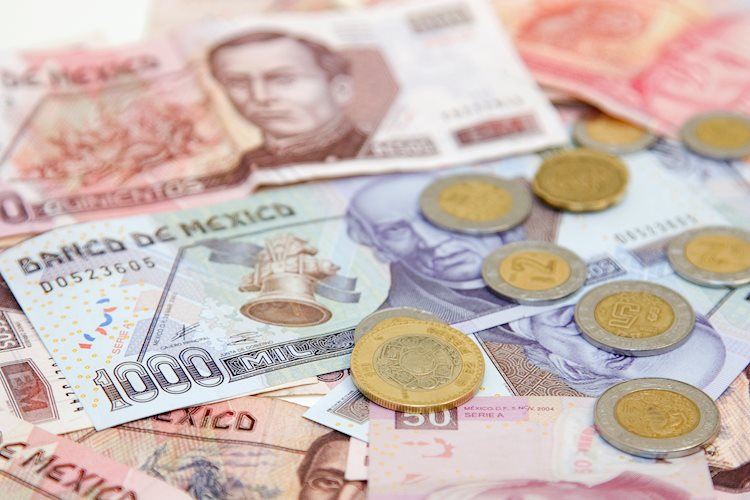The Mexican Peso (MXN) remained steady on Tuesday after experiencing a 1.2% drop in its value against the US Dollar. The Bank of Mexico (Banxico) recently cut interest rates despite an increase in headline inflation figures. However, Mexico’s central bank expects inflation to level out in the near future.
The US Producer Price Index (PPI) data released on Tuesday showed a decrease in business-level inflation for July, easing the pressure on the Greenback and giving the Peso some stability. As markets shift their focus to the possibility of a rate cut in September, the Peso-Dollar exchange rate continues to fluctuate.
The latest data reveals that US PPI inflation for the year ended in July was below expectations at 2.2%, with core inflation dropping to 2.4%. This has led to an increase in bets for a double rate cut by the Federal Reserve in September. According to rate markets, there is a 55% chance of a 50-basis-point cut and a 45% chance of at least a 25 bps trim. Investors are eagerly awaiting the release of July’s Consumer Price Index (CPI) data on Wednesday to get a clearer picture of inflation trends.
The Producer Price Index (PPI) is a key economic indicator that measures changes in prices in primary markets in the US by producers of commodities at all stages of processing. A high reading is considered positive for the USD, while a low reading is viewed negatively. Investors closely monitor PPI data as an indicator of commodity inflation.
The Mexican Peso price forecast remains uncertain as traders grapple with the 19.00 handle against the US Dollar. Despite hitting a 22-month high last week, the Peso has made a 6.44% recovery peak-to-trough. While the USD/MXN pair remains above the 200-day Exponential Moving Average (EMA), Peso bulls are looking to find support to extend their gains.
The Consumer Price Index (CPI) is another important economic indicator that measures inflationary or deflationary tendencies by comparing the prices of a basket of goods and services on a monthly basis. The MoM figure compares the prices of goods in the reference month to the previous month. A high CPI reading is seen as bullish for the USD, while a low reading is considered bearish for the currency.
In conclusion, the Mexican Peso continues to face volatility in the foreign exchange market as traders react to changing economic indicators and central bank decisions. The upcoming release of CPI data will provide further insights into inflation trends and potential rate cuts by the Federal Reserve. Investors will closely monitor these developments to make informed decisions regarding their trading strategies in the coming weeks.











